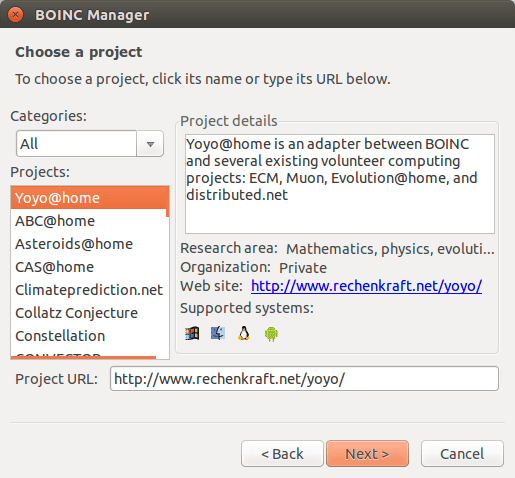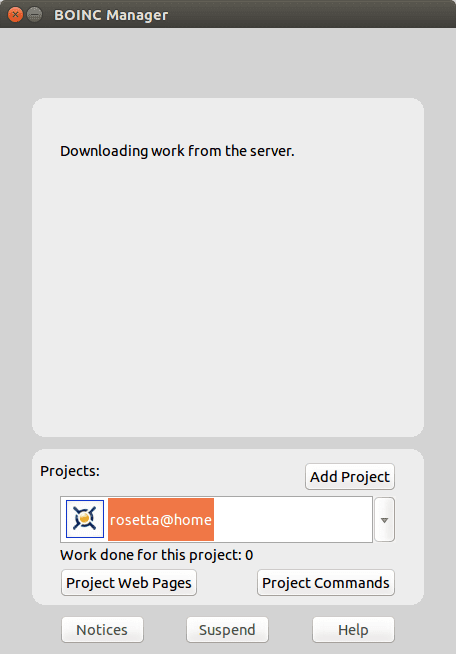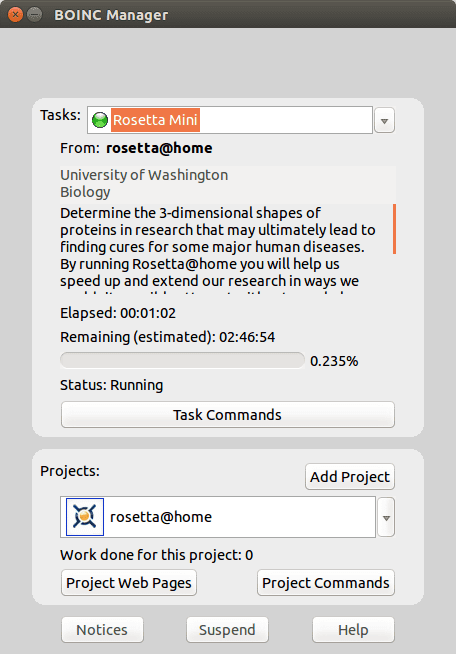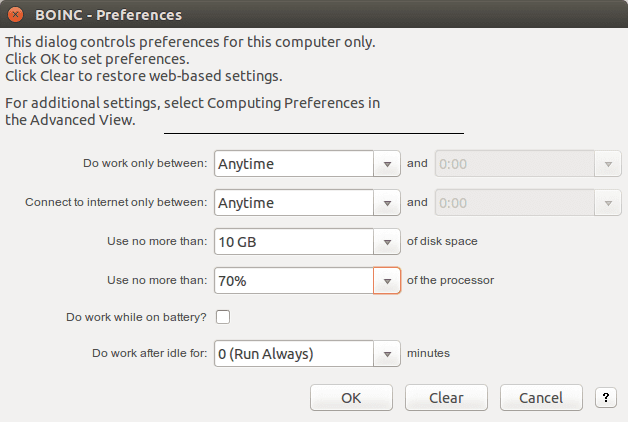BOINC (Berkeley Open Infrastructure for Network Computing) is a platform for FOSS for distributed computing. It was originally developed to support the project SETI @ home, but now it is used as a platform for other distributed applications in areas as diverse as mathematics, medicine, molecular biology, climatology and astrophysics. The main objective of this program is to enable researchers to take advantage of the enormous processing power of personal computers around the world.
In other words, it allows us to get the most out of our equipment and use their downtime to cure diseases, study global warming, discover pulsars and carry out many other tasks that require a great capacity of calculation and that may be of interest in the framework of scientific research. All that is needed is to install the program and select the project with which to collaborate.
Installation
En Ubuntu and derivatives:
sudo apt install boinc-client boinc-manager
En Arch and derivatives:
sudo pacman -S boinc
To open it for the first time, just run:
boincmgr
Once the installation is complete, BOINC to run as a daemon at system startup, displaying the corresponding icon in the system bar.
Use
Step 1: registration
Step 2: select the project with which you want to collaborate
Step 3: final step
Step 4: download the data to be processed
Step 5: processing of downloaded data
Configuration
The interesting thing about BOINC is that it allows you to configure exactly how and when to share our team's resources, as seen in the configuration table below.
It is possible to limit the amount of disk space or CPU to use; BOINC can also be disabled when the equipment is not connected to the mains.
Also for phones and tablets?
As a color data for those who are interested in the subject, BOINC has an application for Android that really does not have waste. Ever thought that all that wasted power that your new smartphone has could help save lives while you're sleeping?






I am glad to see how projects like this are carried out. About three years ago I participated for some time in LHC @ home. But then it wasn't as easy as this. Or at least he didn't know about BOINC. It's a shame that I don't currently have a desktop to connect to any of these projects during the hours I'm not at home.
Anyway, it's nice to know that you're there to support science whenever possible.
A greeting!
So is! Oh by the way, good nick! 🙂
Hug, Pablo.
I really do not understand. In what way can you transmit the power of your hardware through a network cable that one thing that does is send / receive data? Can someone explain it to me?
I used a similar one in PS3, I remember that it downloads a package and based on that it makes its calculation, then it returns the results.
Hi Eduardo! No, you do not transmit "the power of your hardware over a network cable." What distributed computing does is basically divide a BIG problem into millions of "little" problems that different computers, like yours or mine, can solve. Once the results are obtained, they are sent to a central "server" that stores them. This method would replace the need for a supercomputer to perform the calculations since these are carried out by millions of computers (much more modest in power) around the world.
Although this strategy may seem very inefficient, it actually means making better use of the resources of our desktop and laptop PCs, which we rarely "get the most out of."
I hope I have shed some light on your questions.
a hug! Paul.
Good idea. At least, that way I give my cell a good battery drain.
Well, actually, the Android application can be configured to only work when it is plugged into the power and with 90% battery, so that it does not interfere with the speed of charging.
A hug! Paul.
interesting. I will look for more information to see if the final product is suitable for PATENTS (privatizes) or for free information.
Does the program have another language or is it just English?
It is to know if I download it and put it in Spanish, so I can understand it and collaborate better if you use my native language because of English nanay nanay ...
Precisely about the Rosetta project they spoke to us in Chemistry and protein engineering a few years ago during the race. The fact is that there are still many unknowns about the factors that determine the tertiary / quaternary structure of proteins, and an infinity of diseases are known that are caused precisely by altered conformations of these. Remember that while you are working, watching a movie or downloading anything on your machine, you may be contributing to the advancement of science. It is true that perhaps a little more electricity is used, but I think it is worth it 😉
That's right, Debish! Thanks x comment.
a hug! Paul.
I have been using it for many years with the seti project, on mobile it is not worth much
I contributed but it was with the folding @ home project, but that was almost 10 years ago, when I was still a windose: $
Some years ago, in the north of Argentina there was a large outbreak of dengue fever and at that time it seemed like a good idea to use boinc to collaborate with a project in which they were looking for a treatment, cure or something similar to fight this disease.
I don't quite remember how the subject was, but if you didn't configure it correctly, boinc would put you other projects, in addition to the one you chose, when the latter finished making its calculations, even though it has not finished its investigation.
How interesting this is to me. I have joined the Constellation project, and it really has been a very easy thing to start collaborating. Thanks for the recommendation.
You're welcome! Hug! Paul.
Excellent!!! very good post! =)
Thank you for leaving your comment.
Cheers! Paul.
Hi. I just recently started BOINC and had a question. I have already finished two projects that had a short processing time (Milkway and Enigma). Now I have embarked on a slightly longer one, but it happens that the ones that have already finished I cannot select them again. I supposed that another new data package could be downloaded to process, but it seems that it is not like that or that I have to do something else, if I restart the project, would it start with a new data package or how does it go?